

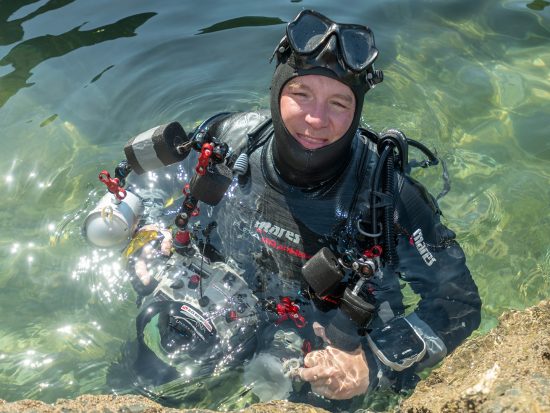
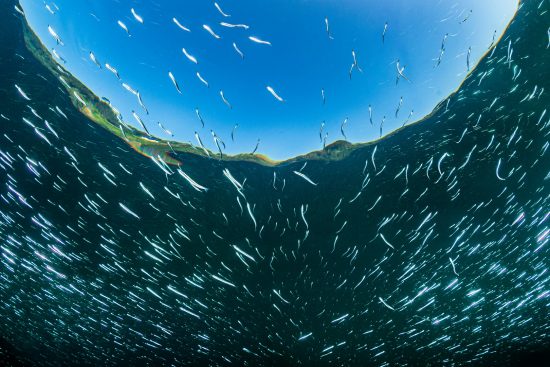
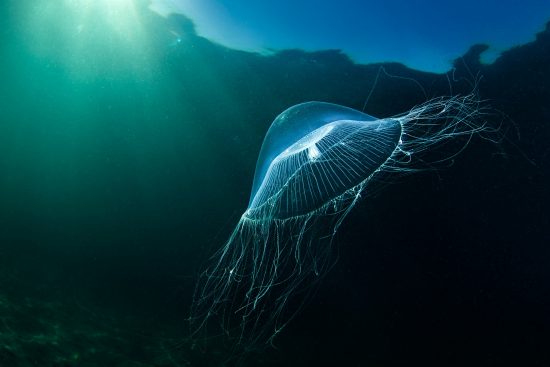
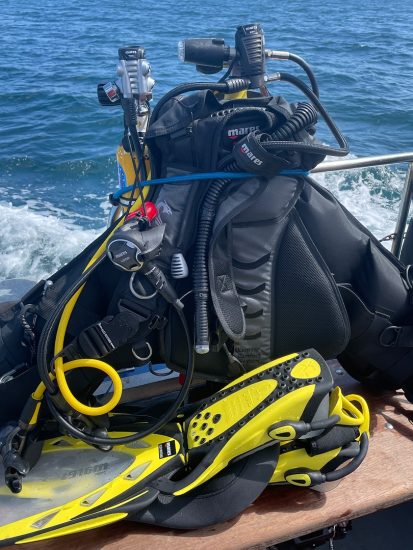
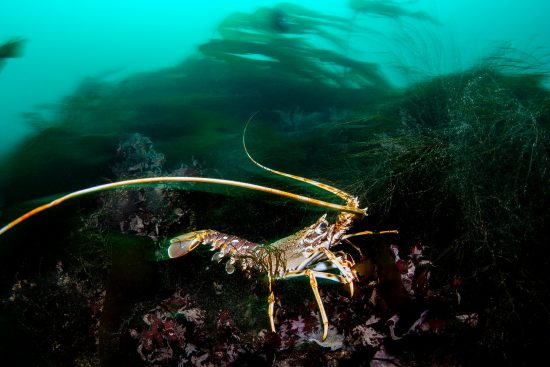
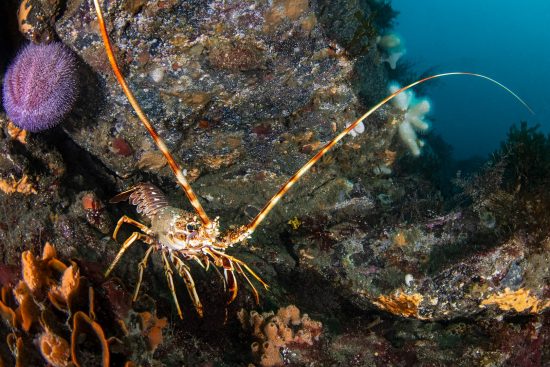
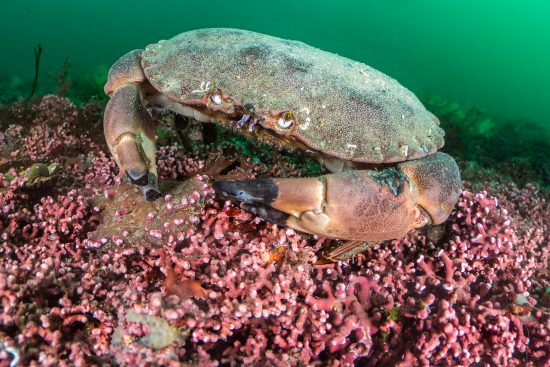
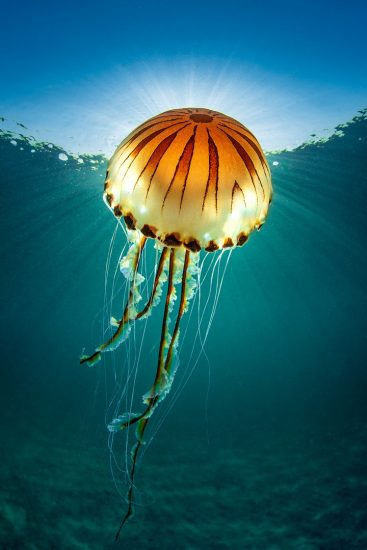
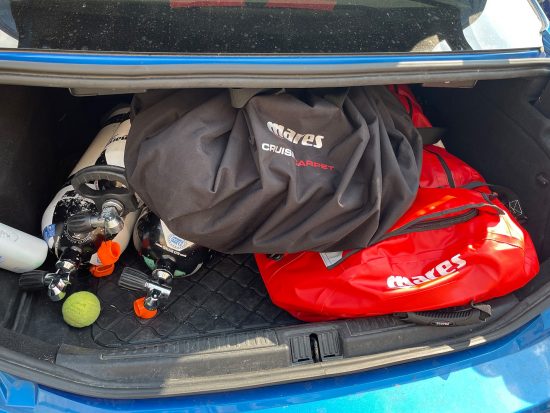
Like many people right now, my options for international travel are limited, but that is not stopping me diving. While very few people choose to travel to England to go diving, that does not mean we don’t have some fantastic diving here, especially during the summer when the water is warmer and the weather more reliable. We have loads of shipwrecks, amazing seaweed gardens, beneath which thrives colourful invertebrate life, and most enticing of all is the chance to see those charismatic larger marine animals, such as playful grey seals and elegant blue sharks. So, I loaded the car and set my navigation for Falmouth in Cornwall. My targets on this trip were the summer gatherings of baitfish in the shallows, jellyfish drifting in the blue and a couple of conservation stories: spiny lobsters and maerl beds (a habitat created by a very strange seaweed).
As anyone who has been to England can predict, one of the biggest challenges to diving here is the changeable weather. When the sea is stormy, many dives sites are off-limits. Waves and rain will both reduce the visibility to touching distance, so you are constantly checking forecasts and chasing the most photography friendly waters. Compared to many places English waters are cool too, but from July onwards I enjoy switching over to a wetsuit so I can feel the ocean again. That said, our waters warm slowly, especially in the west where the Atlantic influence keeps things cool. Despite being July, it was still just 14˚C on this trip, but I was happy logging long, shallow dives in my Flexa Graphene 7mm semi-dry. I am trained and qualified to dive alone, and while I usually go into the water with photography friends, we all accept that snappers get distracted by their cameras, so we prefer to dive with a secondary air supply. For me that is a 3 litre pony cylinder with its dedicated regulator bungy-ed around my neck, should it be needed. I use the Loop regulator on my pony – it’s ‘under the arm’ vertical configuration is so perfect for this type of use – especially for someone like me, carrying a bulky camera too.
Two of the main stories I wanted to shoot on this trip both have important conservation messages. The first, spiny lobsters or crayfish, is a rare good news environmental story (although we’re not there yet). Spiny lobsters used to be common in south west England in the 1970s and 80s, but were fished to the brink of local extinction and most divers didn’t see one for decades. But about 5 years ago people began to spot them again and great efforts have been made to limit fishing and to allow them to recover. And I was pleased to find in the right spots they can be very common. The other prime traget was maerl, which is a super slow-growing, bright pink calcified seaweed, which forms branched nodules totally covering the seabed. It is a rare shallow-water habitat, liking plenty of current, but no waves. But since humans like to make the most of sheltered areas of the sea for construction, mooring, fishing and more, it is a habitat that has really suffered. The Fal Estuary is one of its strongholds, although it makes for a bizarre dive, with the pink seabed glowing like neon beneath the green water, while crabs scurry and nudibranchs glide on top!
Diving from the car means lots of packing and unpacking. This is usually preceded by me trudging up the beach in wet boots, or unloading soaked dive gear from boat. And with English weather nothing dries quickly! Fortunately, the Cruise Carpet bag was a car saver! Open the carpet, step on and take off your boots, suit, gloves and hood, then step away. Pull the string and you have all the wet gear (and all the sand stuck to it) neatly wrapped up and spill-proof.
 Alex
Alex 9th August 2021
9th August 2021